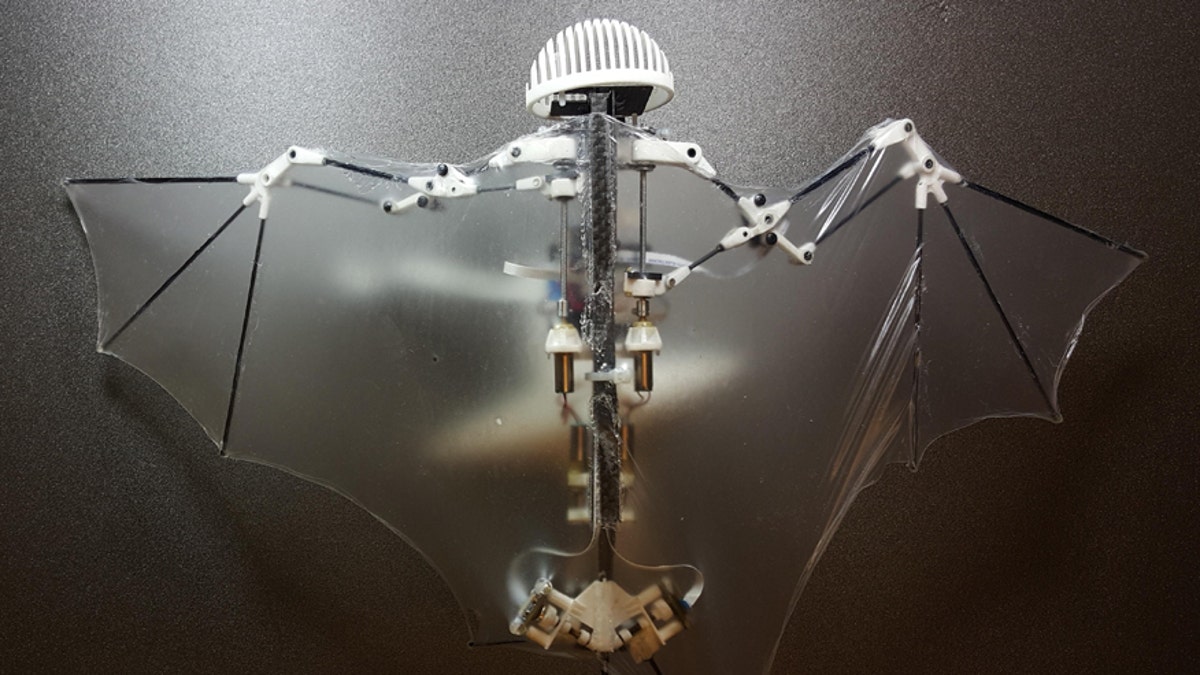
(Ramezani, Chung, Hutchinson, Sci. Robot. 2, eaal2505 (2017))
In what would make an excellent sidekick for Batman, scientists have built a fascinating, unconventional flying robot that moves its wings and flies just like a bat.
Covered with a thin, silicon skin, the flexible wings of this mechanical creature— called Bat Bot— can move like bat wings do, making use of nine different artificial joints (real bats have far more joints). Anyone who’s ever seen a bat flap around at dusk knows they are incredible flyers, and Soon-Jo Chung, one of the flying robot’s creators, said that he gets “mesmerized” by bats’ impressive flight skills, with their quick turns and perching.
“Bat flight is the holy grail of aerial robotics,” Chung, an associate professor at CalTech and a research scientist at NASA’s Jet Propulsion Laboratory, said during a conference call with reporters on Tuesday.
BY SQUEEZING AND TWISTING, NEW ROBOT COULD KEEP HEARTS PUMPING
The flying robotic creation is very different from a typical artificial flying device, like a quadrotor drone that uses spinning propellers. Bat Bot mimics a real species of bat from nature: Egyptian fruit bats.
“We have challenged ourselves to reverse engineer bats’ unrivaled agility with an aim to build a safe, energy-efficient soft-wing robot that can fly like a bat,” Chung said.
The bat bot can fly nearly 100 feet in a straight line, flapping its wings to create lift and propulsion. It weighs less than a quarter of a pound and has a wingspan of about a foot and a half.
Its creators say that a flying bat-like robot has advantages over traditional drones. For one, it’s safer to use in close proximity to humans, because it doesn’t have spinning props. Another possible advantage is the ability to maneuver in tight spaces. Its flexible wings are energy-efficient.
WILL AMAZON'S ALEXA REPLACE THE KEYBOARD?
Seth Hutchinson, a professor at the University of Illinois at Urbana-Champaign and co-author on a new study announcing the robot in the journal Science Robotics, said it could be used to do things like make sure a construction site is being built according to plan, and that it might even be able to perch in a steel structure.
“We imagine that the bat robots could surveil the construction site,” Hutchinson said during the conference call.
Chung told Fox News in an email that taking a page from nature’s playbook— like allowing an entire wing to move and do things like twist— can lead to better flying machines.
“[W]e want to learn from nature how to build safer, more maneuverable, and energy-efficient micro air vehicles or aerial drones,” he wrote. They’re avoiding “strict mimicry,” he wrote— they weren't trying to exactly copy the bat. “We want to decipher functional mechanisms of animal flyers so that we can build better airplanes.”
Follow Rob Verger on Twitter: @robverger




















